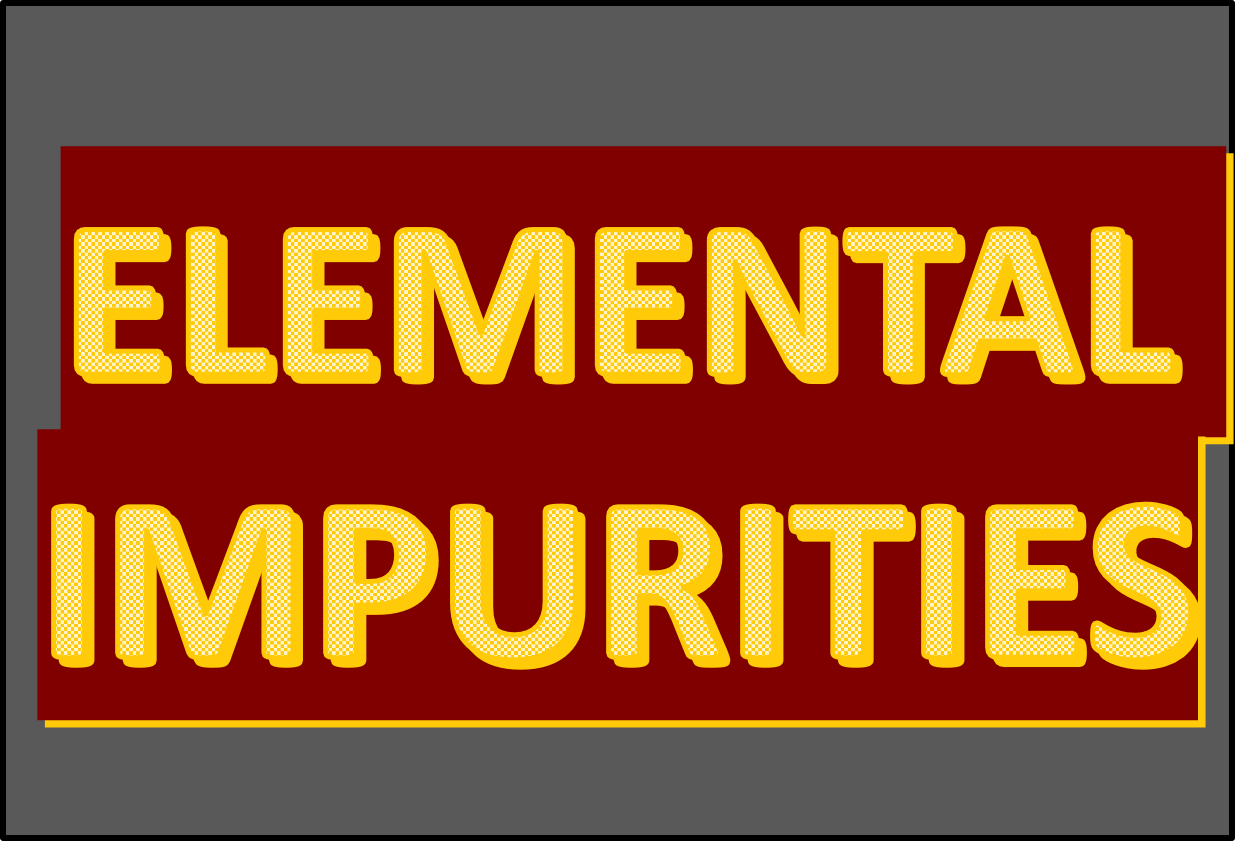Pharmaceutical Elemental Impurities

This article describes about elemental impurities, Its classification and possibilities from where it can be generated.
Elemental Impurities for Pharmaceutical Drug Products
What is mean by Elemental Impurities ?
Elemental impurities are trace amounts of heavy metals or other elements that may be present in a drug product or its components as contaminants. These impurities can arise from various sources such as raw materials, manufacturing equipment, or environmental factors.
If these impurities are known to be present, have been added and have the potential for introduction , it is necessary to ensure compliance with the specified levels. An appropriate risk-based control strategy should be employed to ensure compliance with the standard as per USP 232/USP232 and ICH Q3D. Given the widespread presence of heavy metals such as arsenic, cadmium, lead, and mercury, they should be considered at a minimum during the risk assessment.
What are the sources of Elemental impurities from where it may generate in pharmaceutical drug product?
These impurities may arise in pharmaceutical product through various sources during its manufacturing, packaging, storage, used raw materials and administration. Some common sources of elemental impurities in pharmaceuticals are:
- Raw materials: Elemental impurities can be present in the raw materials used in the manufacturing of pharmaceuticals, such as active pharmaceutical ingredients (APIs), excipients, and packaging materials.
- Manufacturing process: Elemental impurities can be introduced during the manufacturing process of pharmaceuticals, such as through the use of equipment or containers that contain elemental impurities or through contact with the processing environment.
- Water: Elemental impurities can be present in the water which is used in manufacturing of pharmaceuticals drug product, such as in the form of dissolved metals.
- Contaminated air: These impurities can enter the pharmaceutical product through contaminated air, such as through the use of compressed air systems or from the surrounding environment.
- Inherent in the product: Elemental impurities can be inherent in the product, such as in the case of naturally occurring elements or inorganic salts that are part of the structure of the API.
- Interaction with the packaging: These impurities can also be introduced through interactions with the packaging material, such as leaching of metal ions from container closure systems or extractables from the packaging material.
What is the Classification of Elemental Impurities :
Plz find the classification of Elemental impurities in Tabular form with its Brief Description :
| Sr. No. | Classification | Elemental Impurities | Brief Description |
| 1 | Class 1 | As, Cd, Hg, and Pb | Human toxicants with limited or no use in pharmaceutical manufacturing and should be considered in Risk assessment. |
| 2 | Class 2 | Further classified in 2A and 2B | Route dependent human toxicants classified further class i.e. 2A and 2B |
| 2.1 | Class 2A | Ni, V, Co | Almost high probability of occurrence in drug product so need to consider in Risk assessment |
| 2.2 | Class 2B | Rh, Ru, Se, Tl, Ag, Au, Os, Pd, Ir, Pt | Reduced probability of occurrence in drug product. May be excluded from the risk assessment, except if added intentionally |
| 3 | Class 3 | Mo, Sb, Cr, Cu, Sn, Ba, Li, | Relatively low toxicities by the oral route of administration may be excluded (except if added intentionally ) But may require consideration in risk assessment for inhalation and parenteral routes. |
| 4 | Other Elements | Ca, B, K, Mg, Mn, W Zn, Al, Fe, Na | Other elements do not have established PDEs but may need to be considered as elements. |
Reference : https://database.ich.org/sites/default/files/Q3D-R1EWG_Document_Step4_Guideline_2019_0322.pdf
To Read more details on Elemental Impurities plz click on below Link :
ICH Q3D (R1) : https://database.ich.org/sites/default/files/Q3D-R1EWG_Document_Step4_Guideline_2019_0322.pdf
USP 233 : https://www.usp.org/sites/default/files/usp/document/our-work/chemical-medicines/key-issues/c233.pdf

